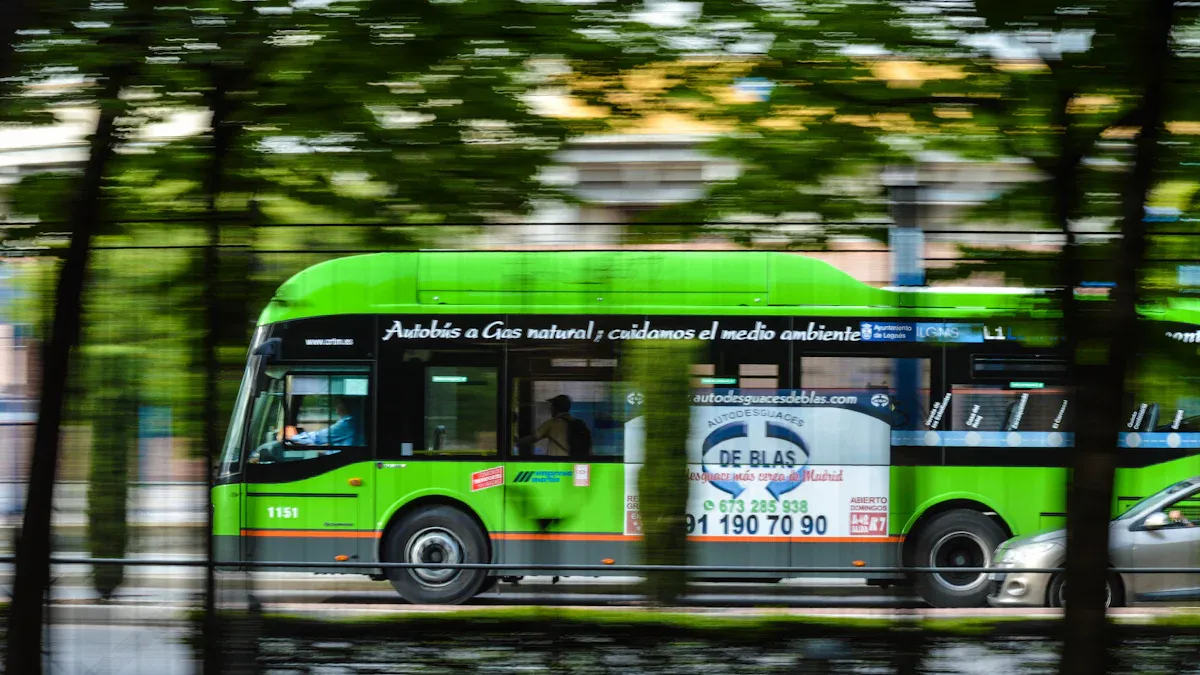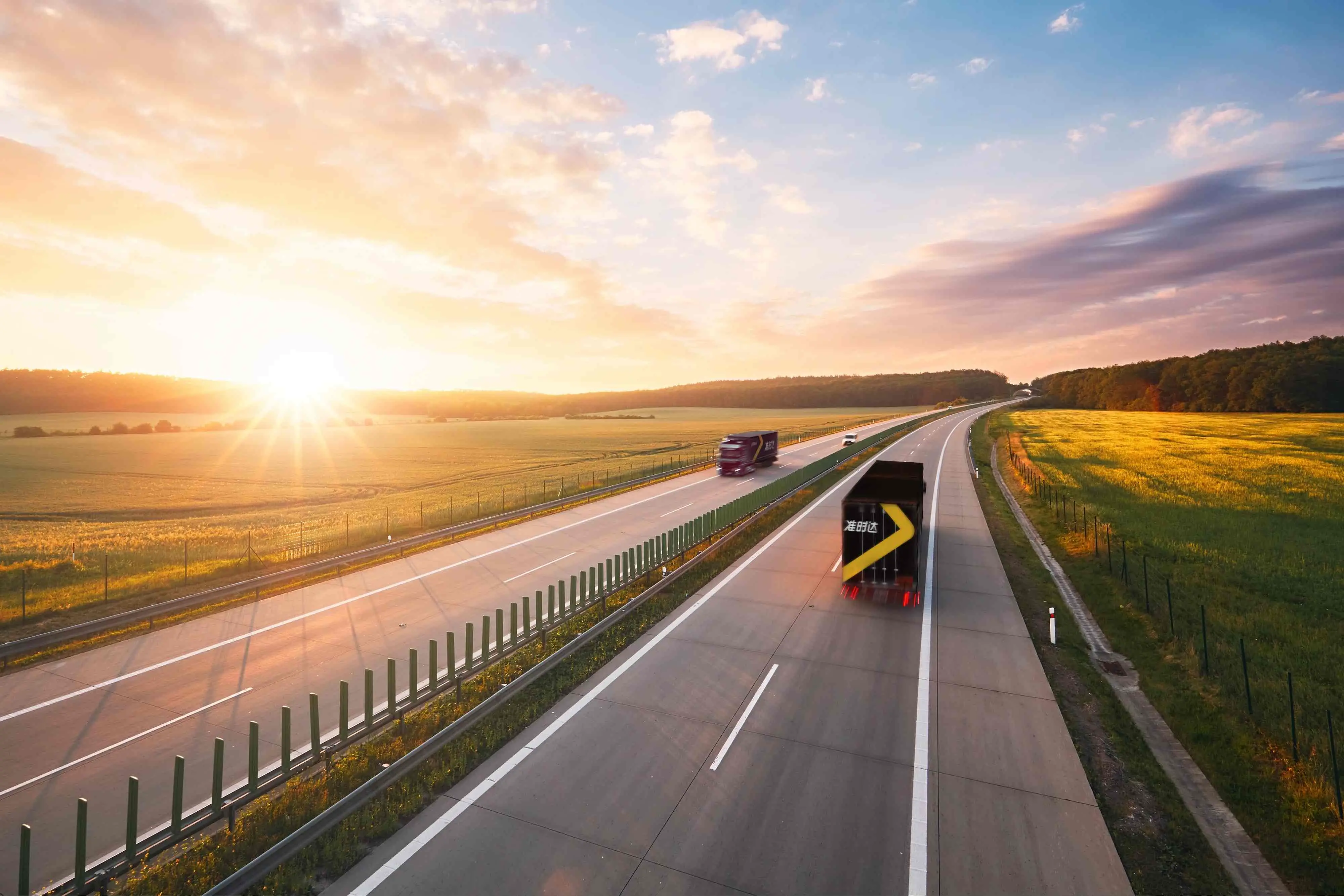Top Trends in Green Logistics for 2025

In the era of logistics, green logistics is becoming increasingly important in 2025. Both businesses and individuals are seeking eco-friendly practices. Transportation contributes to 17% of the world's greenhouse gases, making green logistics essential.
72% of people worldwide are willing to pay extra for eco-friendly items, indicating a growing concern for the environment.
Logistics today focuses on reducing emissions and achieving green goals.
Key Takeaways
Green logistics helps the planet by lowering pollution and trash. Companies can use electric cars and clean energy to reduce harm to nature.
Using smart tools like AI and IoT makes work easier. These tools find better routes and save resources, which saves time and money.
Being eco-friendly makes people trust your brand. Customers like green companies, so using green logistics can make your business look better and bring in more buyers.
Why Green Logistics Matters in the Era of Logistics
Environmental Benefits of Green Logistics
Green logistics helps reduce harm to the environment. It works to lower harmful gases, cut pollution, and reduce waste. Using electric vehicles and cleaner fuels helps cut emissions. Warehouses that use renewable energy lower their carbon impact. Better packaging and waste management also help reduce trash.
In today's world, green practices fight climate change. Eco-friendly transport, green warehouses, and smart packaging are key steps. These actions protect nature and set an example for others to follow.
Economic Advantages of Sustainable Logistics
Green logistics saves money and boosts efficiency. Energy-saving vehicles cost less to run. Green packaging meets rules and saves money too. Reusing materials lowers production and trash costs.
Smart systems plan better routes, saving fuel and time. Using trains or ships instead of trucks cuts fuel costs. These methods help businesses stay strong while caring for the planet.
Building Brand Trust Through Sustainability
People like brands that care about the planet. Green logistics shows you care about the environment. This builds trust with eco-friendly customers. Many people will pay more for green products.
Green practices also improve your business image. They show you meet social and legal expectations. This attracts customers and partners who value sustainability. By going green, your brand becomes a leader in responsible logistics.
Key Trends in Green Logistics for 2025

Cutting Carbon in Supply Chains
Supply chains are reducing carbon to help the planet. Companies invest in projects to cut emissions and use strict methods. They track emissions to match their supply chain goals. Working with tracking groups helps avoid counting emissions twice. These steps lower harmful gases and make logistics greener and better.
Electric and Green Fuel Vehicles in Logistics
Electric and green fuel vehicles are changing logistics. By 2024, electric vehicles will be worth over $600 billion. Europe leads with 45% of the market, while China grows fast with support and funding. These vehicles use less fossil fuel and cut pollution. Using them helps meet the need for eco-friendly transport.
AI and IoT Making Logistics Smarter
AI and IoT are making logistics faster and less wasteful. AI predicts stock needs and plans better routes to save fuel. IoT sensors check goods during shipping to keep them safe. Real-time tracking shows where shipments are, and robots speed up packing. These tools make logistics greener and save money.
Reusing Materials in Circular Supply Chains
Circular supply chains reuse materials to cut waste. This reduces the need for new resources and lowers trash costs. Closed systems use resources wisely, and strong, recyclable goods last longer. These methods cut waste, save money, and help the planet.
Using Renewable Energy in Warehouses
Warehouses with renewable energy are better for the environment. Solar panels and wind power replace fossil fuels. These changes cut costs and pollution. Green energy helps warehouses meet eco-friendly goals and stay sustainable.
Eco-Friendly Packaging Ideas
New packaging ideas are cutting waste and helping the planet. Biodegradable materials replace plastic, and reusable packaging stops single-use waste. Edible packaging is a fun way to reduce trash. Smart packaging uses tech to manage products better. These ideas improve your brand and help reduce waste.
How Businesses Can Adapt to Sustainability in Logistics
Modernizing Fleets with Green Technology
Updating vehicles with green tech helps cut pollution. Electric cars and fuel-efficient trucks are now cheaper and easier to get. Digital tools help plan better routes and save time. For example:
Cities are setting goals for cleaner public transport.
China is boosting green urban transport to lower carbon emissions.
By upgrading fleets, businesses save fuel, follow rules, and help the planet.
Upgrading Infrastructure for Green Logistics
Green buildings are key for eco-friendly logistics. Warehouses using solar or wind power cut pollution. Smart warehouses with sensors save energy by adjusting use instantly. Investing in green buildings lowers costs and supports eco-goals over time.
Leveraging Data and Analytics for Sustainability
Data helps find waste and cut pollution in supply chains. Studying data shows where to improve and save resources. Walmart cut 27 million tons of greenhouse gases by fixing supply chains. Unilever saved $350 million by reducing waste. Using data helps businesses make smart choices and go green.
Partnering with Experts Like JUSDA for Green Logistics Solutions
Working with experts makes going green easier. JUSDA offers full supply chain help with eco-friendly methods. They use green transport and cloud storage to cut emissions. Their skills help meet green goals while staying efficient and saving money.
Educating Teams on Sustainable Practices
Teams are important for green success. Training workers about eco-friendly logistics makes a big difference. For example, Unilever trained staff, helping brands like Dove go green. Teaching teams about sustainability helps everyone work toward eco-goals.
JUSDA ESG: Leading Green Logistics Efforts
JUSDA ESG’s Work to Cut Carbon
JUSDA ESG helps lower carbon emissions in supply chains. It uses smart tools like IoT and big data to track emissions. These tools show where emissions are high, so you can act fast. JUSDA ESG also adds renewable energy to its systems. Solar and wind-powered warehouses use less fossil fuel. These steps reduce pollution and support global eco-friendly goals.
JUSDA ESG’s Eco-Friendly Packaging Solutions
JUSDA ESG offers packaging that cuts waste and helps the planet. It uses materials that can break down or be recycled easily. These choices lower the harm caused by logistics waste. JUSDA ESG also supports reusable packaging to avoid single-use trash. These methods follow rules and improve your brand’s green image. Eco-friendly packaging is now a must for staying competitive.
JUSDA ESG’s Role in Circular Supply Chains
JUSDA ESG helps create supply chains that reuse and recycle items. Its system tracks materials to reduce waste and save resources. This approach lowers the need for new raw materials and cuts costs. Circular supply chains make operations more efficient and sustainable. JUSDA ESG’s smart ideas help you reach these goals while staying productive.

JUSDA Solutions
To provide you with professional solutions and quotations.
Green logistics helps the planet and makes businesses work better. It cuts harmful gases, uses clean energy, and supports eco-goals. Trends like reusing materials and green tech are changing logistics. Using tools like JUSDA ESG can help build a cleaner future.
See Also
Five Key Trends Shaping Future Supply Chain Efficiency
Leading Five Logistics Initiatives To Watch In 2024
Comprehensive Guide To Eco-Friendly Transportation In Supply Chains
Revealing JUSDA's Growth In Sustainable Logistics Efficiency
Investigating Robotics Trends For Sustainable Supply Chain Management
